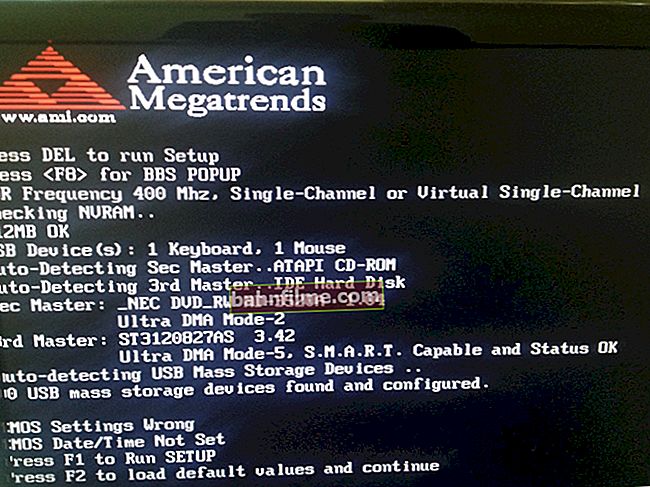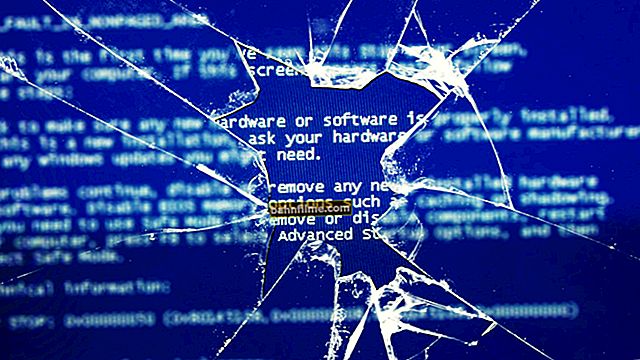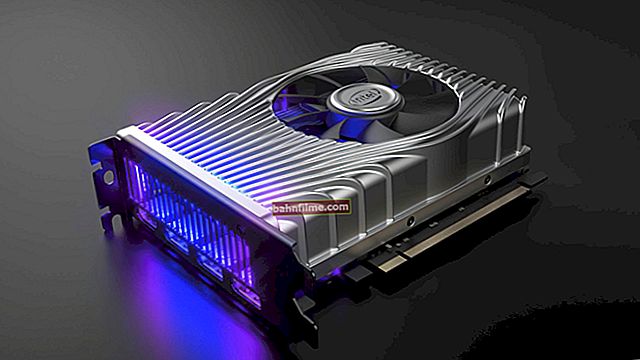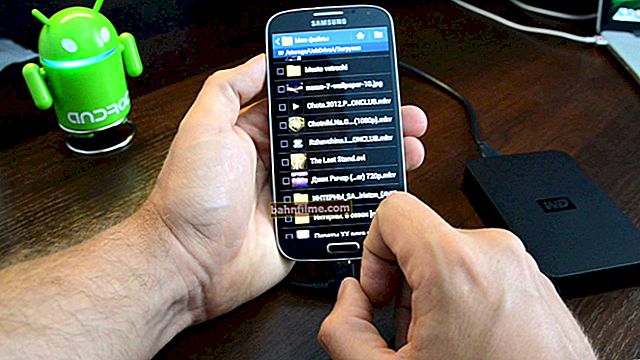 Good day!
Good day!
The HDMI interface allows you to quickly and easily display image and sound from a computer (laptop) to a TV, external monitor, set-top box and other audio-video devices.
As a rule, it is enough to connect the devices with a cable and specify in the settings that the HDMI port is used. Agree, this is very convenient and fast (at least compared to the "older" interfaces).
But even modern technologies are still far from ideal, and when working with HDMI, one typical problem occurs - when there is an image, but there is no sound (or the sound continues to play in the PC / laptop speakers)! This can happen for a number of reasons, which I am going to dwell on today ...
Note: I can't help but warn you about the precautions when working with HDMI. With a "hot" connection, the HDMI port may burn out (I recommend that you familiarize yourself with my previous article) - //ocomp.info/hot-hdmi-gorit.html
To help!

Instructions for connecting a laptop to a TV [via HDMI] - //ocomp.info/kak-podklyuchit-noutbuk-k-tv.html
*
The most common reasons for no sound over HDMI
❶
Insidious Mute button and a couple more nuances
The first thing I recommend to start with is to check the basic settings of the TV itself (because if there is an image, then surely everything is in order with the cable and ports).
If the TV (monitor) does not respond at all to the cable connection, I recommend that you read this instruction: //ocomp.info/kompyuter-ne-vidit-vtoroy-monitor.html
First of all, we are talking about adjusting the sound volume and the silence mode (which is activated by the "Mute" button). See the photo below.

Mute button to mute the sound ...
Very often, many accidentally press this button (or forget to "squeeze" it after the ad block).
Also pay attention to the number of HDMI ports your TV (set-top box) has. If there are several of them, try connecting your computer to the HDMI 1 port (the fact is that many devices HDMI 1 combines the functionality of the HDMI and MicroUSB interfaces, which significantly reduces the likelihood of such a "problem").
❷
Sound can be fed to another device
In Windows, there is one unpleasant "feature" in the sound settings: when changing some parameters, rebooting, updating, connecting new equipment, etc., the device to which the sound is sent is not always correctly selected.
That is, in cases where there are several devices that can play sound - Windows "does not know" which one to use. As a result, the sound continues to play in the speakers of the computer, but it is not on the TV ...
To change sound settings: right-click on the sound (speaker) icon in the Windows tray and follow the link "Sounds" ... Then go to the tab "Playback" ... See screenshot below.
If there is no sound icon in the tray, see this - //ocomp.info/propal-znachok-gromkosti.html

Sounds - Play / Clickable
By the way, you can also open the sound settings tab through the control panel - just open the section "Hardware and Sound" and click on the link "Sound" ... See example below.

Hardware and Sound - Sound (Control Panel) / Alternative Method
Then select from the list the device with the name of your TV / external monitor (perhaps the device will be called "Intel Audio ...", or "AMD High Definition ...", or "nVidia High Definition ..."), click on right click it and select the option "Use as default" ... See example below.

Use as default
Then the sound should start playing on the TV.
Important!
If your TV (monitor) icon is grayed out (and cannot be selected and used by default), then check again if your HDMI cable is tightly connected. After that, restart your computer / laptop and check the tab again!
❸
Lack of driver
The lack of sound may be due to the fact that you have not installed (not updated) the video card driver (the component responsible for outputting sound via HDMI).Moreover, in some installers, you can manually select which components to install (and when updating, some press "Next / Next ..." and skip the cherished checkbox) ...
In general, to check for the presence (absence) of a driver, you need to open device Manager ... To do this, press the combination of buttons Win + R (the "Run" window will appear), enter the command devmgmt.msc and click OK.

Launching Device Manager - devmgmt.msc
To help!
How to open the device manager (several ways) - //ocomp.info/kak-otkryit-dispetcher-ustroystv.html
Then open the tab "Sound, game and video devices" and see if you have a device with a name close to "AMD High Definition Audio Device" ("nVidia High Definition Audio", etc.) .

AMD High Definition Audio Device
Also, pay attention to whether it is turned off (what a turned off device looks like - see the screenshot below).

The device is turned off ... (notice the icon)
To help!

Automatic driver update - //ocomp.info/update-drivers.html
In addition, I recommend that you also look at whether the controller is turned on. "High Definition Audio" (tab "System devices"). Try restarting it: turn it off / on.

High Definition Audio Controller On
By the way, before the "manual" update of the video card driver - remove the old one completely, and during installation carefully review which components were included (see example below).

Install nVidia / Take a close look at all components when installing drivers
❹
Sound is not configured in Driver Control Center
Please note that the video driver control center may have its own settings for working with connected AV devices.
Note: to open the video driver settings, use its icon in the tray. Or right-click in any free space on the desktop, the coveted link will be in the menu that appears ...

Open IntelHD settings
Next, find the section / tab responsible for the connected displays. In the Intel HD settings, it is called so directly "Display", tabs "Multiple displays" and "Audio settings" (in nVidia - "Display / Digital Audio Setting" ). After, see which device you have selected for playing sound, whether it is displayed at all ...

Display settings in IntelHD

Installing digital audio
❺
A few words about adapters and HDMI port version
If you connect a TV to a laptop (for example) not directly HDMI-HDMI, but through an adapter, then in some cases the sound will simply not be transmitted! It's all about the features of the interface (not every one of them allows you to transmit an audio signal in parallel to video). The once popular VGA, DVI - audio is not transmitted *, so when using them - the sound must be transmitted via a separate cable ...

VGA and DVI interfaces
*Note! Monitor connectors (VGA, DVI, HDMI, Display Port). What cable and adapter is needed to connect the monitor to a laptop or PC - //ocomp.info/razemyi-monitorov-dvi-display-port.html
But when using Display Port-HDMI adapters, there should be no problems, both interfaces support the simultaneous transmission of an audio-video signal.

HDMI to VGA adapter
One more thing about HDMI: relatively old TVs may have HDMI (DVI) V1.3 ports (you can see the “HDMI (DVI)” label next to the port). They do not support sound, so if you connect to such a port, you will not be able to transmit it.
❻
Diagnosing Sound Problems
And the last thing I would like to note. Windows 10 has a pretty good tool for automatically finding the causes of sound problems and fixing them. To launch it, just right-click on the volume icon in the tray and select the item in the menu that appears "Troubleshooting Sound Problems" .

Troubleshoot audio problems
After that, Windows will automatically check the status of devices, drivers, restart services and (possibly) fix the problem (or tell you which way to "dig" ...).
*
That's all for now ...
Good luck!
👣









